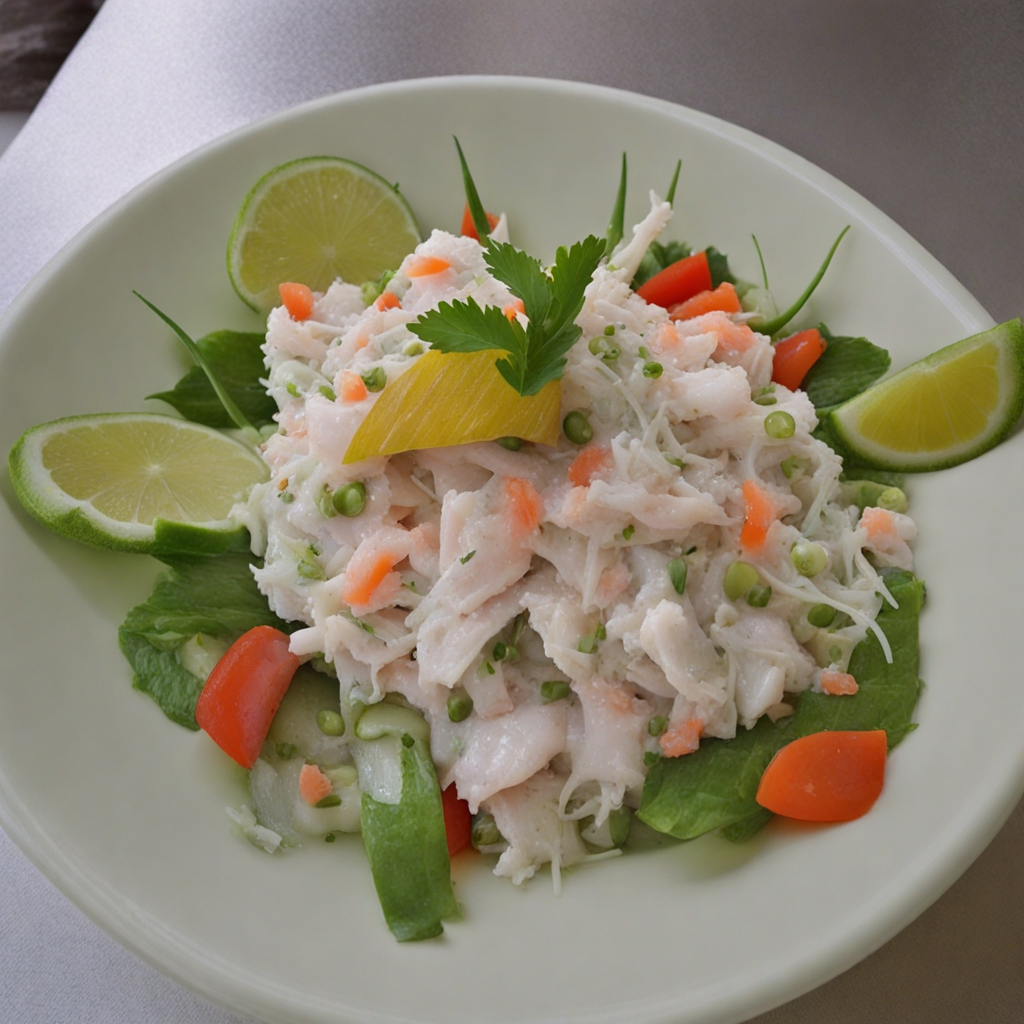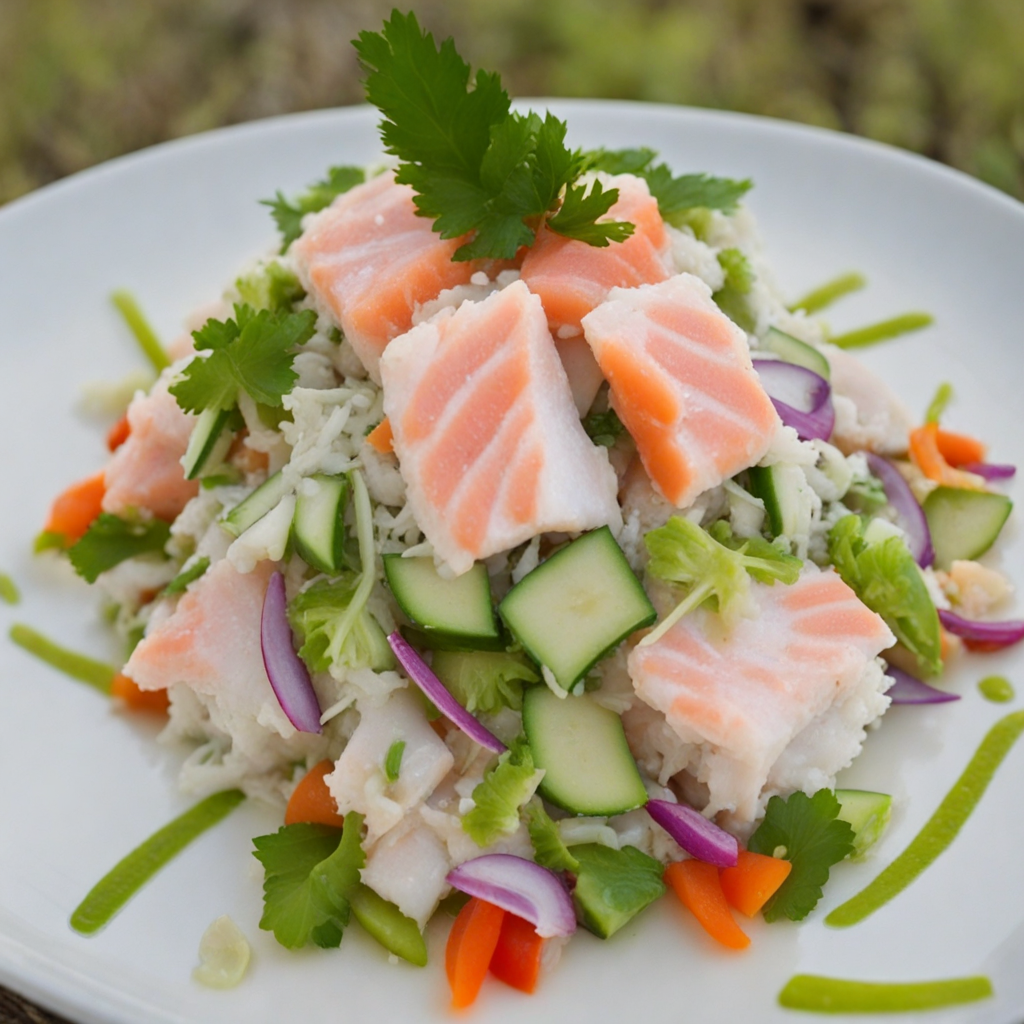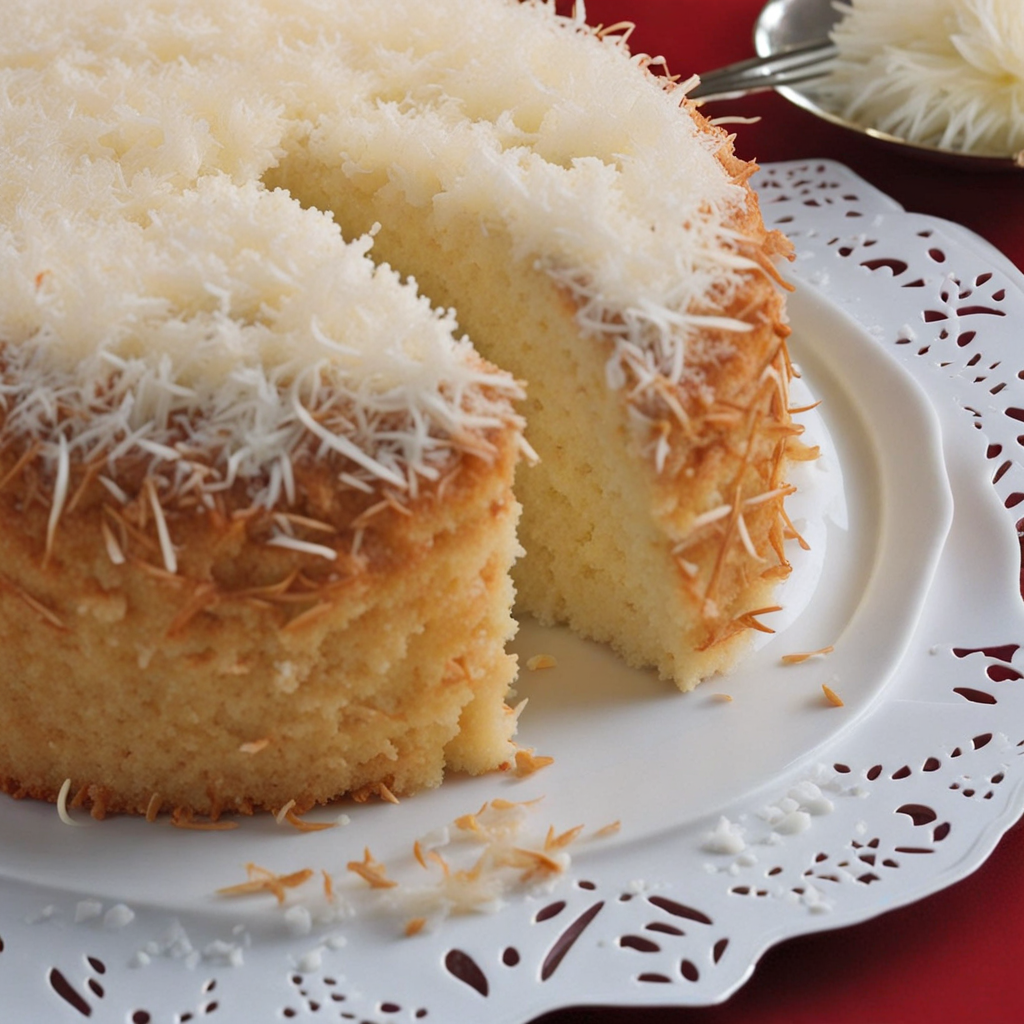Oka
Oka is a delightful Tongan dish that showcases the beautiful flavors of the Pacific Islands. At its core, Oka consists of fresh, raw fish, often tuna or marlin, which is marinated in a zesty mixture of lime or lemon juice. This citrusy marinade not only cooks the fish through a process called “ceviche,” but also infuses it with vibrant, tangy notes that awaken the palate. The fish is typically diced into small, bite-sized pieces, making it perfect for sharing and enjoying as an appetizer or light meal. To elevate the dish further, Oka is traditionally mixed with a medley of fresh vegetables, including diced tomatoes, onions, and sometimes cucumbers. These ingredients add a refreshing crunch and a burst of color, making the dish visually appealing as well as delicious. Additionally, Tongan Oka often incorporates coconut cream, which lends a rich, creamy texture and complements the acidity of the marinade beautifully. The result is a harmonious blend of flavors and textures that transport you straight to the shores of Tonga. Oka is typically served chilled, allowing the flavors to meld together while providing a refreshing experience, particularly on warm days. It's often accompanied by taro or cassava, which add a satisfying starchiness to the meal. As you take your first bite of Oka, expect a delightful combination of ocean-fresh fish, zesty citrus, and creamy coconut, all harmonizing to create a taste that is both unique and utterly irresistible. This dish is a perfect representation of Tongan culinary traditions, celebrating the simplicity and freshness of its ingredients.
How It Became This Dish
Oka: A Culinary Treasure of Tonga Origins of Oka Oka, a traditional dish from the islands of Tonga, embodies the rich cultural tapestry of Polynesian cuisine. The dish is primarily composed of fresh fish, commonly tuna or snapper, marinated in citrus juices, typically lime or lemon, and often mixed with coconut cream, onions, and sometimes a hint of chili for a touch of heat. At first glance, Oka may seem akin to the more globally recognized ceviche from South America, but its roots and cultural significance are deeply intertwined with Tongan identity. The origins of Oka can be traced back to the ancient Polynesians, who were skilled navigators and fishermen. The islands of Tonga, known as the 'Friendly Islands,' boast an abundance of marine resources. The Tongan people have relied on the ocean for sustenance for millennia, and Oka is a testament to their connection to the sea. The practice of marinating fish in citrus juices is believed to have been introduced by early Tongan settlers who utilized the local flora to enhance their dishes, showcasing their ingenuity in food preparation. Cultural Significance Oka is more than just a dish; it is a significant cultural symbol for the Tongan people. Food in Tonga is deeply ingrained in social practices, rituals, and celebrations. Oka is often served during feasts, family gatherings, and special occasions, playing a crucial role in fostering community ties. The sharing of food, particularly Oka, represents generosity and hospitality, values that are paramount in Tongan culture. In Tongan society, the act of preparing and sharing Oka is imbued with meaning. It is a way to honor the land and sea while acknowledging the central role of family and community. The preparation of Oka often becomes a communal activity, where family members gather to catch fish, prepare ingredients, and enjoy the dish together. This practice reinforces social bonds and highlights the importance of cooperation and teamwork in Tongan culture. Additionally, Oka reflects the Tongan worldview, which emphasizes respect for nature and the interconnectedness of all living things. The use of fresh, locally sourced ingredients in Oka demonstrates a sustainable approach to food that has been practiced for generations. As such, Oka serves as a reminder of the Tongan people’s deep respect for their environment, a value that is increasingly important in today’s world. Development Over Time Over the centuries, Oka has undergone various transformations while preserving its core elements. The traditional preparation involves marinating raw fish, which is a technique that has been passed down through generations. However, the introduction of new ingredients and culinary influences has led to an evolution of the dish. The arrival of European explorers and settlers in the Pacific in the 18th and 19th centuries brought new flavors and ingredients to Tonga. While traditional Oka typically relied on local ingredients, the incorporation of new spices and herbs has diversified the dish. For instance, the addition of ingredients like ginger, lemongrass, and even soy sauce has become more common in contemporary recipes, reflecting a blend of traditional and modern culinary practices. In recent years, Oka has gained popularity beyond Tonga, as awareness of Polynesian cuisine has spread globally. This has led to the emergence of fusion recipes that combine Oka with other culinary traditions, such as using different types of seafood or incorporating tropical fruits like mango or pineapple. These modern variations are often enjoyed in Tongan restaurants and at cultural festivals, showcasing the adaptability of this cherished dish. Moreover, Oka has found its place within the global movement toward fresh, raw, and healthy food options. As health-conscious eating habits become more prevalent, the appeal of Oka, with its fresh ingredients and vibrant flavors, has increased. This has simultaneously contributed to the preservation of Tongan culinary heritage while allowing for innovation and creativity in its preparation. Sustainability and Future of Oka Today, as the world becomes more aware of environmental issues and the importance of sustainable practices, Oka stands as a model for sustainable eating. The Tongan people have long practiced sustainable fishing methods, and the dish highlights the importance of using fresh, local ingredients. Many Tongan communities are now focusing on preserving their marine ecosystems, ensuring that future generations can continue to enjoy Oka and other traditional dishes. The revival of traditional cooking methods and the emphasis on local ingredients have sparked interest among younger generations in Tonga. Culinary schools and community initiatives are working to educate young Tongans about their culinary heritage, ensuring that the art of making Oka is not lost but rather celebrated and innovated upon. This movement also extends to the diaspora, where Tongans living abroad are sharing their culinary traditions with wider audiences, contributing to a global appreciation of Tongan cuisine. Moreover, as international interest in indigenous and traditional foods grows, Oka has the potential to become a culinary ambassador for Tongan culture. Food festivals, cultural exchanges, and pop-up restaurants featuring traditional Tongan dishes, including Oka, have begun to flourish in various parts of the world. This exposure not only promotes Tongan cuisine but also fosters a deeper understanding and appreciation of Tongan culture and its values. Conclusion Oka is a dish that encapsulates the essence of Tongan identity, history, and cultural significance. From its ancient origins to its evolution in contemporary cuisine, Oka serves as a bridge between the past and the present, connecting generations of Tongans through shared culinary traditions. As the world continues to embrace diverse culinary experiences, Oka stands out as a vibrant representation of Tongan culture, celebrating the beauty of fresh ingredients, communal dining, and respect for nature. Through Oka, the Tongan people share a piece of their heritage with the world, inviting everyone to experience the flavors and stories of their islands.
You may like
Discover local flavors from Tonga







